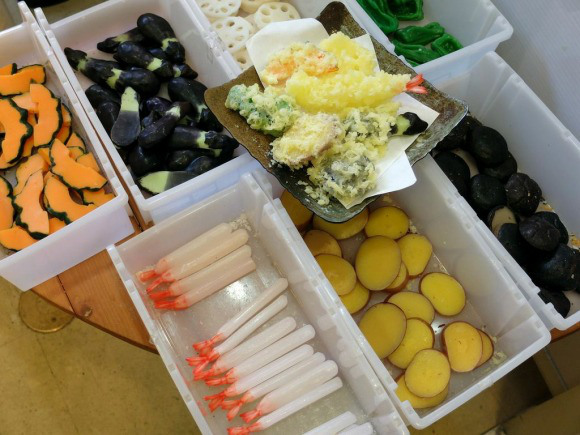
Although the language barrier can make traveling or living in Japan tough at times, dining out is a snap. There are plenty of conveyer belt sushi restaurants where you just grab what you want as the plates go by, and at many ramen and beef bowl restaurants you simply buy a meal ticket out of a vending machine, then pass it off to the cook.
Even when technology isn’t there to save you, ordering is still easy, thanks to the numerous Japanese restaurants that display wax models of their menu items, allowing you to bring the wait staff to the display window and point and what you want. There’s a whole industry devoted to replicating food, and we recently tried our hand at making a wax creation of our own.
When restaurateurs need to buy wax models, they head to Kappanashi, Tokyo’s culinary supply district. Among the stores selling razor-sharp sashimi knives and the dozens of different types of plates and bowls used in preparing a full-course Japanese meal, you’ll find the showroom of Ganso Samples, which is where we went for our lesson in wax food model making.
We were tagging along with a member of the Shiri 100 Project, a group offering opportunities for people to learn about and try unique, traditional Japanese experiences such as grabbing freshwater eels with your bare hands (a must-have skill for chefs who specialize in the delicacy) or preparing rice the old-fashioned way, with a fire instead of an electric rice cooker.
When we arrived, we found out we were in for a special treat. For that day only, the branch’s manager himself, Katsuyoshi Yamashita, would be teaching the lesson. Since we obviously don’t have his level of familiarity with the techniques used in replicating food in wax form, he told us we’d be making a model of shrimp and vegetable tempura, with a garnish of lettuce, which should be relatively easy even for first-timers like us.
We started with the tempura. The models of the shrimp and vegetables were already made, so we’d be doing the final step of making them appear fried in the delicious, crispy coating.
First, we were given a paper cup filled with melted wax, which we added, slowly but steadily, into a vat of hot water. As we did, it spread out on the surface, taking on the appearance of tempura batter.
Once we had a sizeable enough patch, we placed a single piece of our vegetables on top, then gave it a twist to coat it with the wax all around. We repeated the process for our shrimp, and just like that, we had some model tempura that was indistinguishable from the real thing.
We were feeling pretty proud of ourselves, and our friend from Shiri 100 displayed a similar knack for making wax tempura. But while real tempura is tricky to get just right, as far as food modeling goes, we had more trouble with our lettuce.
The first step of the process was more or less the same as with the tempura, as we spread white wax onto the surface of the boiling water. Next, we placed a layer of green wax on top of that, submerged the whole thing to stretch it out, and finally rolled it give it a proper scrunched up shape.
That last step is where things got difficult for us, as you can see by comparing the lettuce made by the amateurs (ours is on the right) with the model made by Yamashita (on the left).
But while our lettuce may not be realistic enough to fool anyone into pouring dressing over it, it’s close enough to the genuine article that we’d like to give making it one more shot.
After we go through the other 99 activities on Shiri 100’s list, that is.
Photos: RocketNews24
Related: Shiri 100, Shiri 100 Facebook, Ganso Samples
[ Read in Japanese ]


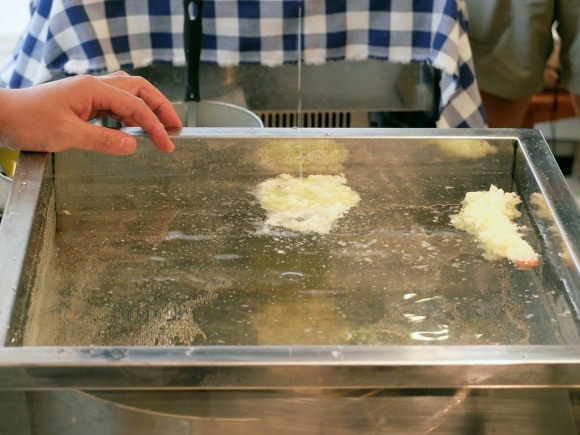
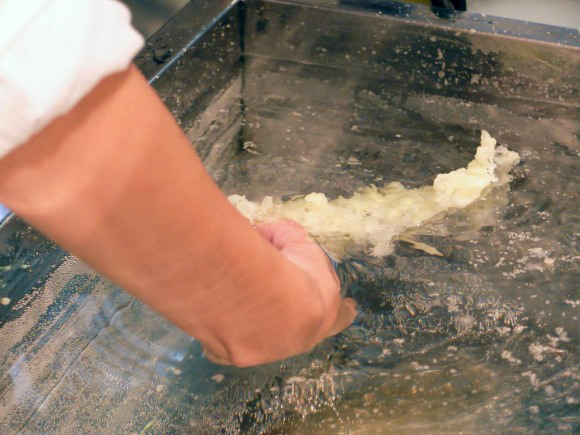
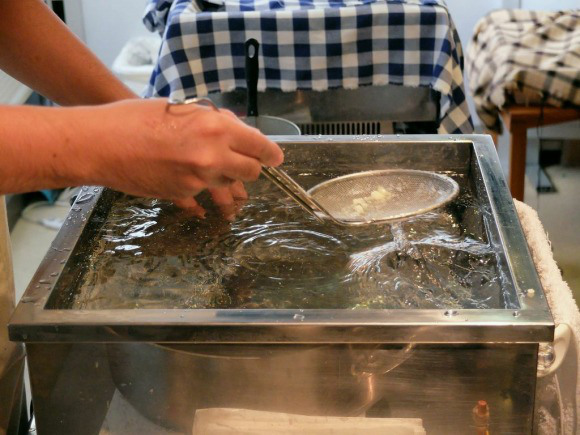
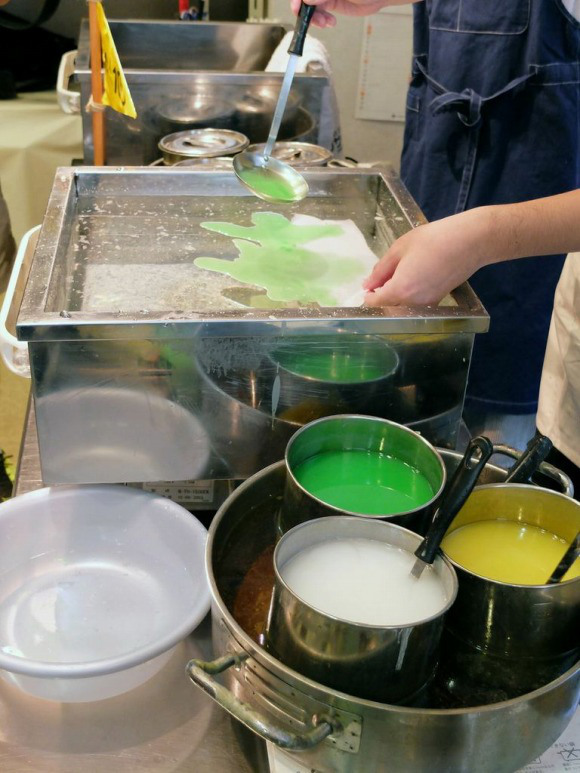
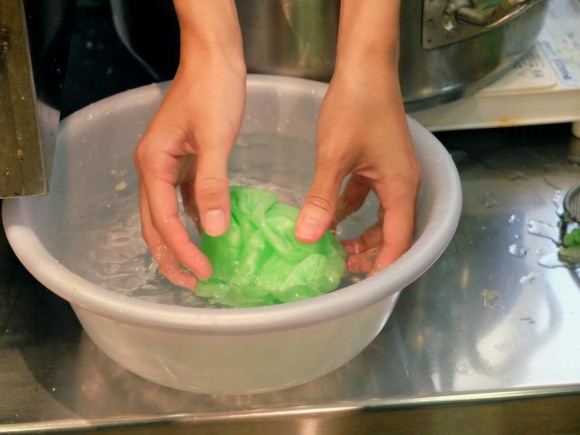
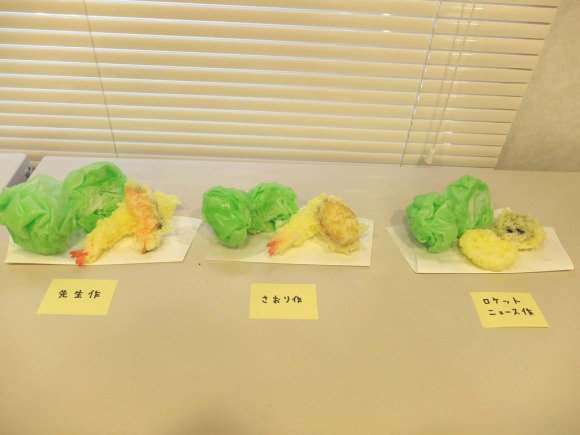
 100 things to do in Japan in 100 seconds 【Video】
100 things to do in Japan in 100 seconds 【Video】 Cheap vs. expensive — Is a premium-priced tempura bento really worth it?【Taste test】
Cheap vs. expensive — Is a premium-priced tempura bento really worth it?【Taste test】 How to turn leftover tempura into fried rice (or why to buy all the takeout tempura you can)
How to turn leftover tempura into fried rice (or why to buy all the takeout tempura you can) You’ll need a healthy dose of imagination for these Japanese window food samples
You’ll need a healthy dose of imagination for these Japanese window food samples Tokyo restaurant offers “DIY Tempura Bowls,” so of course we had to go check it out
Tokyo restaurant offers “DIY Tempura Bowls,” so of course we had to go check it out McDonald’s new Happy Meals offer up cute and practical Sanrio lifestyle goods
McDonald’s new Happy Meals offer up cute and practical Sanrio lifestyle goods More foreign tourists than ever before in history visited Japan last month
More foreign tourists than ever before in history visited Japan last month Is the new Shinkansen Train Desk ticket worth it?
Is the new Shinkansen Train Desk ticket worth it? Starbucks reopens at Shibuya Scramble Crossing with new look and design concept
Starbucks reopens at Shibuya Scramble Crossing with new look and design concept Arrest proves a common Japanese saying about apologies and police
Arrest proves a common Japanese saying about apologies and police The oldest tunnel in Japan is believed to be haunted, and strange things happen when we go there
The oldest tunnel in Japan is believed to be haunted, and strange things happen when we go there Beautiful new Final Fantasy T-shirt collection on the way from Uniqlo【Photos】
Beautiful new Final Fantasy T-shirt collection on the way from Uniqlo【Photos】 Randomly running into a great sushi lunch like this is one of the best things about eating in Tokyo
Randomly running into a great sushi lunch like this is one of the best things about eating in Tokyo Foreign English teachers in Japan pick their favorite Japanese-language phrases【Survey】
Foreign English teachers in Japan pick their favorite Japanese-language phrases【Survey】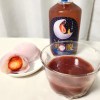 We tried Japan’s Strawberry Daifuku? liqueur, one of three dessert-themed liqueurs
We tried Japan’s Strawberry Daifuku? liqueur, one of three dessert-themed liqueurs Disney princesses get official manga makeovers for Manga Princess Cafe opening in Tokyo
Disney princesses get official manga makeovers for Manga Princess Cafe opening in Tokyo We try out “Chan Ramen”, an underground type of ramen popular in the ramen community
We try out “Chan Ramen”, an underground type of ramen popular in the ramen community There’s a park inside Japan where you can also see Japan inside the park
There’s a park inside Japan where you can also see Japan inside the park Japanese convenience store packs a whole bento into an onigiri rice ball
Japanese convenience store packs a whole bento into an onigiri rice ball Studio Ghibli releases Kiki’s Delivery Service chocolate cake pouches in Japan
Studio Ghibli releases Kiki’s Delivery Service chocolate cake pouches in Japan Japan’s bone-breaking and record-breaking roller coaster is permanently shutting down
Japan’s bone-breaking and record-breaking roller coaster is permanently shutting down New definition of “Japanese whiskey” goes into effect to prevent fakes from fooling overseas buyers
New definition of “Japanese whiskey” goes into effect to prevent fakes from fooling overseas buyers Foreign passenger shoves conductor on one of the last full runs for Japan’s Thunderbird train
Foreign passenger shoves conductor on one of the last full runs for Japan’s Thunderbird train Our Japanese reporter visits Costco in the U.S., finds super American and very Japanese things
Our Japanese reporter visits Costco in the U.S., finds super American and very Japanese things Kyoto bans tourists from geisha alleys in Gion, with fines for those who don’t follow rules
Kyoto bans tourists from geisha alleys in Gion, with fines for those who don’t follow rules Studio Ghibli unveils Mother’s Day gift set that captures the love in My Neighbour Totoro
Studio Ghibli unveils Mother’s Day gift set that captures the love in My Neighbour Totoro Domino’s Japan now sells…pizza ears?
Domino’s Japan now sells…pizza ears? New Japanese KitKat flavour stars Sanrio characters, including Hello Kitty
New Japanese KitKat flavour stars Sanrio characters, including Hello Kitty Sales of Japan’s most convenient train ticket/shopping payment cards suspended indefinitely
Sales of Japan’s most convenient train ticket/shopping payment cards suspended indefinitely Sold-out Studio Ghibli desktop humidifiers are back so Totoro can help you through the dry season
Sold-out Studio Ghibli desktop humidifiers are back so Totoro can help you through the dry season Japanese government to make first change to romanization spelling rules since the 1950s
Japanese government to make first change to romanization spelling rules since the 1950s Ghibli founders Toshio Suzuki and Hayao Miyazaki contribute to Japanese whisky Totoro label design
Ghibli founders Toshio Suzuki and Hayao Miyazaki contribute to Japanese whisky Totoro label design Doraemon found buried at sea as scene from 1993 anime becomes real life【Photos】
Doraemon found buried at sea as scene from 1993 anime becomes real life【Photos】 Tokyo’s most famous Starbucks is closed
Tokyo’s most famous Starbucks is closed One Piece characters’ nationalities revealed, but fans have mixed opinions
One Piece characters’ nationalities revealed, but fans have mixed opinions We asked a Uniqlo employee what four things we should buy and their suggestions didn’t disappoint
We asked a Uniqlo employee what four things we should buy and their suggestions didn’t disappoint Princesses, fruits, and blacksmiths: Study reveals the 30 most unusual family names in Japan
Princesses, fruits, and blacksmiths: Study reveals the 30 most unusual family names in Japan Studio Ghibli’s new desktop Howl’s Moving Castle will take your stationery on an adventure
Studio Ghibli’s new desktop Howl’s Moving Castle will take your stationery on an adventure Japan’s one-person mini tempura pot turns every day into fry day
Japan’s one-person mini tempura pot turns every day into fry day Think you’ve had every type of tempura? Not until you’ve eaten deep-fried maple leaves
Think you’ve had every type of tempura? Not until you’ve eaten deep-fried maple leaves Udon chain’s awesome “Tempura Pass” deal works out to less than 10 yen per piece over five weeks
Udon chain’s awesome “Tempura Pass” deal works out to less than 10 yen per piece over five weeks How to make your own ramen food sample with real ramen, in just 1.5 hours and -22.6 degrees C
How to make your own ramen food sample with real ramen, in just 1.5 hours and -22.6 degrees C Make potato chips twice as delicious by soaking them in green tea before eating them【SoraKitchen】
Make potato chips twice as delicious by soaking them in green tea before eating them【SoraKitchen】 We test out wax hair removal strips from the 100-yen store on our hairy, manly legs
We test out wax hair removal strips from the 100-yen store on our hairy, manly legs It turns out deep frying grilled rice balls makes them amazingly delicious【SoraKitchen】
It turns out deep frying grilled rice balls makes them amazingly delicious【SoraKitchen】 Master tempura chef in Hamamatsu uses his bare hands to cook with boiling oil【Video】
Master tempura chef in Hamamatsu uses his bare hands to cook with boiling oil【Video】 Which Japanese conveyor belt sushi chain has the best Prawn Tempura Sushi?【Taste test】
Which Japanese conveyor belt sushi chain has the best Prawn Tempura Sushi?【Taste test】 How to make a delicious tempura nothing bowl without any actual cooking【SoraKitchen】
How to make a delicious tempura nothing bowl without any actual cooking【SoraKitchen】 This Tempura Soba Burger has some famous credentials behind its creation
This Tempura Soba Burger has some famous credentials behind its creation Clam chowder tempura being offered by Japan’s most popular tempura restaurant chain
Clam chowder tempura being offered by Japan’s most popular tempura restaurant chain What should you use table salt for at a sushi restaurant? We asked a kaitenzushi maniac
What should you use table salt for at a sushi restaurant? We asked a kaitenzushi maniac We try “Japan’s best-selling miso soup” and it melts the cold in our bones
We try “Japan’s best-selling miso soup” and it melts the cold in our bones How to have a great meal at conveyer belt sushi chain Kura Sushi even if you hate raw fish
How to have a great meal at conveyer belt sushi chain Kura Sushi even if you hate raw fish Four things you should order at rotating sushi restaurant Sushiro if you don’t eat raw fish
Four things you should order at rotating sushi restaurant Sushiro if you don’t eat raw fish
Leave a Reply